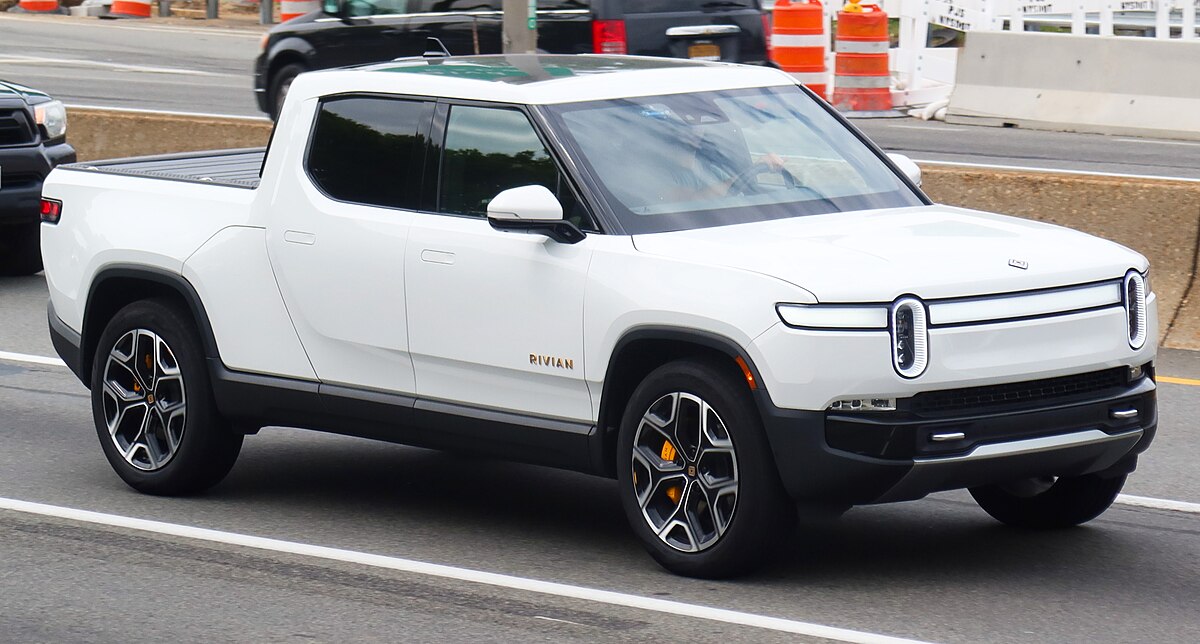
Electric Dreams and Assembly Lines - Rivian's Strategic Pivot Amid Production Slowdown
Electric Dreams and Assembly Lines: Rivian's Strategic Pivot Amid Production Slowdown
The sprawling assembly plant in Normal, Illinois sits eerily quiet on certain production lines, a deliberate calm before the storm. While workers retool equipment for next year's models, Rivian Automotive's ambitious electric vehicle roadmap is being rewritten not by haste, but by calculated restraint.
The EV manufacturer reported Wednesday it produced just 5,979 vehicles in the second quarter while delivering 10,661 — drawing down existing inventory as it deliberately throttled production to reconfigure its plant for 2026 model-year vehicles. The production figure landed 47% below analyst expectations, sending shares down 2% in pre-market trading to $13.47.

"Temporary Pain, Long-term Gain": The Volkswagen Lifeline
Behind this production slowdown lies a strategic gambit that may determine Rivian's fate. The company simultaneously announced a $1 billion equity investment from Volkswagen Group at $19.42 per share — a 33% premium to its 30-day average — as part of a broader $5.8 billion joint venture for technology collaboration.
"This partnership represents validation from the world's second-largest automaker at a crucial inflection point," noted one industry analyst who follows both companies closely. "Volkswagen isn't just buying shares; they're buying into Rivian's electrical architecture and software capabilities while offering manufacturing expertise in return."
The investment extends Rivian's runway amid persistent concerns about cash burn. After achieving its second consecutive quarter of positive gross profit — $206 million in Q1 — Rivian now faces the delicate balance of funding ambitious growth while convincing investors it can reach sustainable profitability.
The Deliberate Deceleration: Inside the Production Slowdown
Walking through Rivian's cavernous 3.3-million-square-foot factory reveals the paradox of the company's current strategy. A facility theoretically capable of producing 150,000 vehicles annually delivered less than 4% of that capacity last quarter.
The three-week line stoppage in April wasn't an emergency measure but a planned recalibration. Workers installed new tooling for the 2026 R1 platform while engineers fine-tuned production processes. This retooling comes as Rivian prepares not just for refreshed models but for the make-or-break R2 SUV slated for late 2026.
"You're seeing a company prioritize long-term positioning over quarterly optics," explained a manufacturing consultant familiar with Rivian's operations. "The question is whether the market will give them that breathing room."
The delivery figures tell a more nuanced story. While production plummeted, deliveries of 10,661 vehicles — though down 22.7% year-over-year — nearly matched expectations as Rivian depleted warehouse inventories to keep customers satisfied during the production lull.
Headwinds Beyond the Factory Walls
Beyond its production halls, Rivian navigates an increasingly hostile external environment. U.S. auto-import tariffs have elevated component costs while higher interest rates have suppressed consumer appetite for premium electric vehicles.
"The EV landscape has fundamentally shifted since Rivian's 2021 IPO," observed a veteran automotive analyst. "Price competition is intensifying as Ford, GM, and Chinese manufacturers expand their electric offerings. Meanwhile, consumers increasingly opt for lower-cost hybrids as the early-adopter wave subsides."
This market transformation puts additional pressure on Rivian's refreshed lineup to deliver not just innovation but cost efficiency. The company's reaffirmation of 40,000-46,000 vehicle deliveries for 2025 suggests confidence in its production recovery, but investors remain skeptical about whether such volumes can generate sustainable profits.
The Balance Sheet Equation
Rivian's financial calculus extends beyond production figures. Despite Q1's encouraging gross profit milestone, the company continues exploring financing options. Bloomberg reported the company is considering up to $2 billion in high-yield bonds to refinance 2026 maturities.
The Volkswagen investment provides critical breathing room but raises questions about equity dilution. Even at a premium, the new shares dilute existing investors while potentially creating an overhang if VW eventually reduces its stake.
"The cash injection buys time, but the fundamental equation remains unchanged," noted a portfolio manager specializing in mobility investments. "Rivian needs to reach production scale that enables sustainable positive cash flow before its capital options narrow further."
A David Among Goliaths
The scale disparity between Rivian and established manufacturers remains stark. Tesla's anticipated Q2 deliveries of 350,000-395,000 vehicles dwarf Rivian's output by nearly two orders of magnitude, highlighting the challenger's uphill battle to achieve cost efficiencies.
Meanwhile, BYD's global deliveries surged 45% year-to-date, demonstrating how Chinese manufacturers are capturing pricing and feature advantages through manufacturing scale.
"Rivian faces a race against time," said one supply chain expert. "They need to leverage the Volkswagen partnership to accelerate their learning curve while preserving their innovation edge in a rapidly commoditizing market."
The Road Ahead: Investment Implications
For investors watching Rivian's evolution, several inflection points loom large in the coming months:
The August 5th earnings call represents the next critical milestone. If gross profit momentum continues despite Q2's production limitations, the stock could find support in the mid-teens. However, any hint of margin erosion could trigger further selling pressure.
More fundamentally, Rivian's investment case increasingly hinges on the R2 SUV. If the company can leverage Volkswagen's scale to deliver a ~$45,000 electric SUV with 7-8% gross margins by 2026, it could transform from niche pioneer to mainstream contender.
"We're witnessing a critical transition period," suggested a technology analyst tracking the EV sector. "Rivian's differentiated platform and direct-to-consumer model remain compelling, but execution risks around new model launches and capital management will determine whether they can challenge the industry leaders or remain perpetually subscale."
Based on current market conditions and historical patterns, analysts suggest Rivian shares may remain range-bound between $12-16 through year-end, with significant volatility around quarterly results. The stock appears fairly valued at current levels given both upside potential from operational improvements and ongoing dilution risks.
Investors should note that past performance doesn't guarantee future results. All investment decisions should be made in consultation with financial advisors considering individual risk tolerance and portfolio objectives.
Editor's note: Rivian will release its complete Q2 2025 financial results on August 5, 2025, with a webcast scheduled for 5:00 p.m. ET.